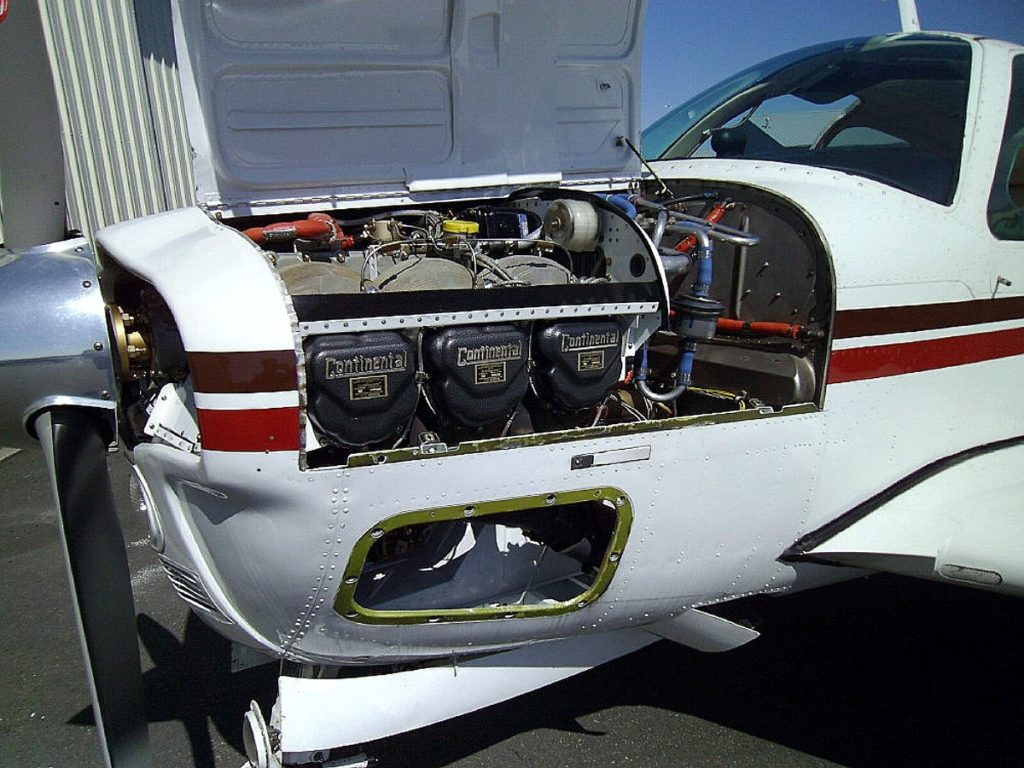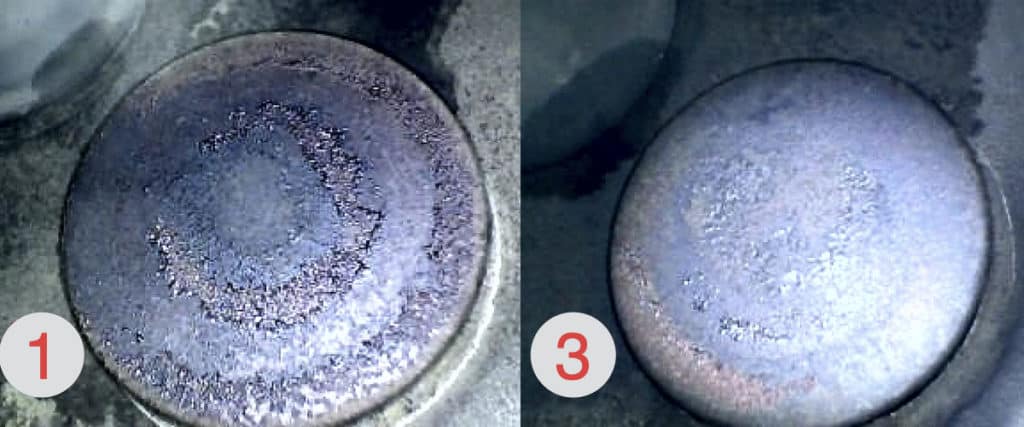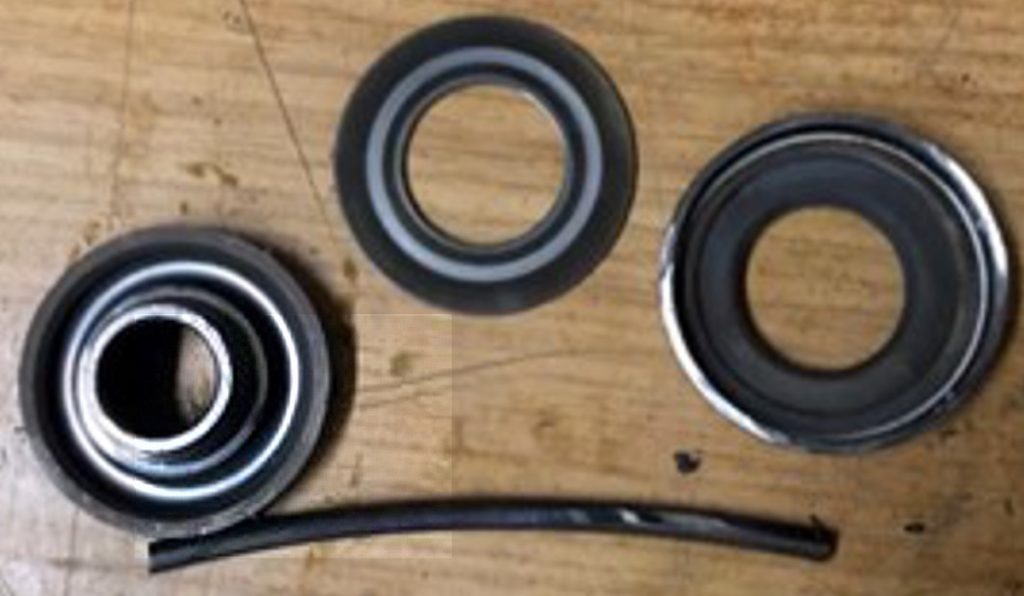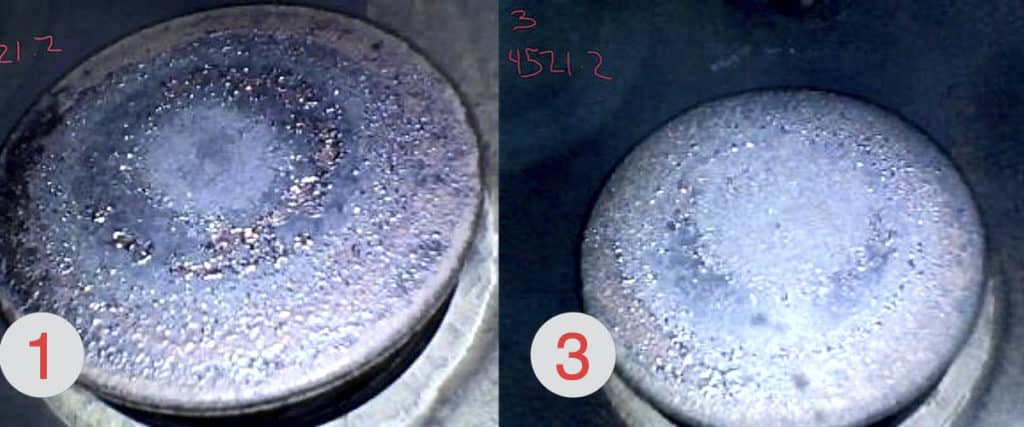
“While I was replacing the worn spark plugs on my Bonanza today, I used my borescope to look at the exhaust valves,” Nick posted to a new SavvyQA ticket. “It looks to me as if the #1 & #3 exhaust valves are beginning to show some asymmetrical coloring. What do you think?”
Nick attached these two images to his ticket post:

“I uploaded engine monitor data for all of my flights if you need to take a look at those as well,” Nick added. “CHTs have always run cool.”
“Nick, I’m not seeing any oscillation in any of your EGT traces,” replied Savvy’s chief analyst Joe Godfrey, “so if there’s a burn pattern developing on those exhaust valves, it has to be pretty nascent. I’m going to call in Brandon Thompson, one of our A&P/IA account managers, to review your borescope images.”
“Good catch, Nick!” posted Brandon soon afterwards. “I agree with you about the asymmetry developing on those two valves, but it’s clearly very early in the game, so I would suggest removing the valve springs, lapping the valves to the seats to clean them up a bit, and then reinstalling the valve springs with new rotator caps.”
“Exactly what I had in mind,” Nick replied. “I’ll keep you posted on my progress.”
“Savvy account manager Paul New A&P/IA has a good article about lapping valves in place on his website,” Brandon added.
Progress Report
“I lapped both valves yesterday and new rotators should be here today,” Nick posted the following day. “I’ll fly a few hours, watch the engine monitor data, then borescope again to see if there is any change. I am also going to cut the old rotators open to see what the garter spring looks like inside.”
“Take lots of photos please,” said Brandon. “We’d be very interested to see what you find out.”
Some days later, Nick posted some photos of one of the valve rotators that he removed and disassembled:

The garter spring that is the heart of the rotator mechanism—the component that actually causes the valve to rotate—was seriously flat-spotted:

“The spring is difficult to measure,” Nick said, “but mine appeared to have one-quarter to one-third of their thickness worn away.”
“This might cause the rotator to rotate the valve erratically or perhaps not at all,” replied Brandon. “That could certainly account for the uneven valve temperatures exhibited in the borescope photos of the valve faces.”
Improvement Comes Quickly
“Here’s what those valves look like after 23 hours of engine operation since the lapping,” Nick posted along with a couple of borescope images. “I’m definitely seeing improvement, the asymmetrical signatures seem to be disappearing.”

“Nice!” Brandon agreed. “Great job catching these two failing rotators so early and avoiding the need for cylinder removal.”
At Savvy, we just love working with maintenance-savvy owners like Nick. We encourage our clients to do as much preventive maintenance on their aircraft as they have time, interest and aptitude to do—things like oil changes, oil filter inspection, spark plug maintenance, and borescope inspections that owners are allowed to do themselves without A&P involvement or supervision.
Maintenance-savvy owners understand their aircraft and its systems better. As Nick’s experience illustrates, they are often able to catch incipient failures and nip them in the bud before they become serious airworthiness issues requiring expensive and invasive repairs.
If you’re a maintenance-involved owner like Nick—or aspire to become one—we would love to work with you. For just $375 a year, you can enroll your aircraft in our SavvyQA maintenance consulting program, which also entitles you to SavvyAnalysis (engine monitor data analysis) and 24/7 Breakdown Assistance (basically AAA for GA). It’s one of the best bargains in general aviation.
You bought a plane to fly it, not stress over maintenance.
At Savvy Aviation, we believe you shouldn’t have to navigate the complexities of aircraft maintenance alone. And you definitely shouldn’t be surprised when your shop’s invoice arrives.
Savvy Aviation isn’t a maintenance shop – we empower you with the knowledge and expert consultation you need to be in control of your own maintenance events – so your shop takes directives (not gives them). Whatever your maintenance needs, Savvy has a perfect plan for you: